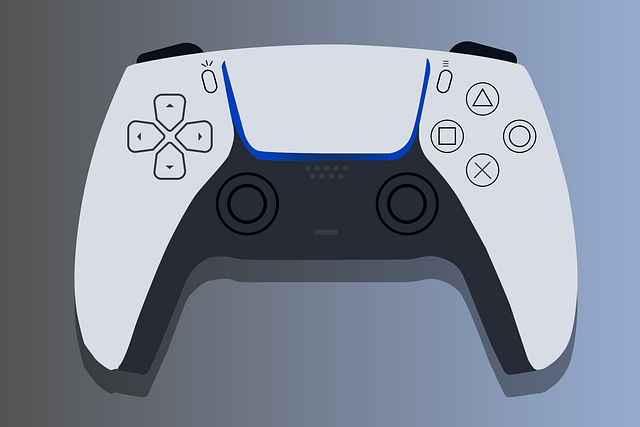Blurry videos can result from camera shake, incorrect exposure settings, or inadequate frame rates. Beginners should learn best practices like steadying the camera and optimizing lighting to prevent these issues. Video editing software with stabilization features is crucial for enhancing footage. Hardware stabilizers like gimbals offer advanced smoothing for professional production. Pre-stabilization techniques, such as using a tripod and higher frame rates, maintain video sharpness. Comparing various stabilization methods allows for tailored adjustments based on video type and needs.
Blurry videos are a common problem, but there are effective ways to fix them. This article guides you through the process of video stabilization, from understanding the causes of blurry footage to exploring various techniques and tools. We’ll cover software solutions that can smoothen shaky videos, as well as hardware-based methods for achieving stable shots. Additionally, we provide tips for optimal pre-stabilization shooting and compare different stabilization techniques to help you achieve crystal-clear video.
- Understand Blurry Video Causes
- Assess Video Stabilization Techniques
- Utilize Software Solutions for Stabilization
- Explore Hardware-Based Stabilization Methods
- Tips for Effective Pre-Stabilization Shooting
- Compare Results and Refine Techniques
Understand Blurry Video Causes

Blurry videos are often a result of various factors that can be easily overlooked. Understanding these causes is essential when trying to fix them. One common issue is camera shake, which occurs when the camera itself moves during recording, leading to unsteady footage. This can happen due to inexperienced handling or using inexpensive equipment without image stabilization features. Another frequent cause is improper exposure settings; if the camera’s sensors aren’t receiving enough light, it may result in a darkened image that appears blurry.
Additionally, low frame rates and inadequate video analysis methods can contribute to blurriness. Beginners might find it helpful to refer to a beginner’s guide to video editing software to learn about basic adjustments. Understanding best practices for video editing, such as maintaining a steady camera and optimizing lighting, is key to preventing future blurry videos. If you’re looking for resources, be sure to check out the online tools available; many offer valuable tutorials and tips to enhance your video quality.
Assess Video Stabilization Techniques

When assessing video stabilization techniques for blurry videos, it’s crucial to understand the diverse methods available. Modern technology offers a range of solutions from hardware-based stabilizers to software-driven algorithms. Hardware stabilizers, like gimbal-mounted cameras, are ideal for professional video production for social media, providing smooth footage even in challenging conditions. On the other hand, software stabilization techniques leverage video editing tips for beginners to correct minor tremors and blurriness post-shoot.
For more complex scenarios, advanced video-based emotional intelligence training algorithms can analyze and interpret visual data, offering sophisticated stabilization. These AI-driven tools adapt to various environments and subject matters, ensuring every frame is crisp and clear. Ultimately, the right choice depends on the specific needs of your project—whether it’s for creating captivating social media content or enhancing educational videos by giving us a call at video as an educational tool.
Utilize Software Solutions for Stabilization

When it comes to enhancing your videos, utilizing software solutions for stabilization is a powerful tool. Many modern editing programs offer advanced features for stabilizing shaky footage, allowing you to create smoother and more professional-looking videos. These tools are especially beneficial for videographers aiming to elevate their work, whether for personal projects or video production for social media.
For instance, if you’ve ever encountered blurry videos due to camera shake, these software solutions can be a game-changer. They enable you to stabilise the footage without losing quality, ensuring your audience enjoys a seamless viewing experience. Moreover, exploring various video editing applications can provide access to sophisticated stabilization techniques, making it easier to transform raw footage into captivating visuals, even for those new to video tutorials. Visit us at critical thinking in video interpretation anytime for more insights.
Explore Hardware-Based Stabilization Methods

Hardware-based stabilization methods offer effective solutions for achieving clear and stable videos. Many modern cameras and smartphones now come equipped with advanced image stabilization technologies, which can significantly reduce shake and jitter during recording. These built-in stabilizers work by using sensors to detect and counteract camera movement, resulting in smoother footage. This is particularly beneficial for creating engaging video content, especially in dynamic environments or for applications like digital storytelling with video and video in science communication.
For more advanced stabilization, professional video production setups often employ gimbal-based stabilizers. Gimbals are mechanical arms that allow for smooth panning and tilting, effectively canceling out camera movement. This technology is widely used in cinematography and can produce remarkable results, ensuring every frame of video looks crisp and professional. Moreover, with the advancement of remote work and virtual collaboration, visiting us at video production for remote teams anytime can provide access to these stabilization tools, enhancing the quality of remotely created video content.
Tips for Effective Pre-Stabilization Shooting

To ensure your videos are sharp and stable from the start, consider these pre-stabilization shooting tips. Firstly, use a tripod whenever possible. Even for seemingly static shots, a tripod can help eliminate minor tremors that can compound over time, leading to blur. Secondly, master the art of framing—both in terms of composition and camera angle. Aim to keep your shots level and avoid excessive movement when reframing.
Additionally, understanding and practicing good video production techniques, such as using a higher frame rate for smoother playback later during editing, can go a long way. If you’re looking to dive deeper into these concepts, video tutorials for learning new skills offer valuable insights. Remember that how to create engaging video content doesn’t have to be complex; it’s often about capturing well-composed, steady footage from the beginning. And for those serious about video production, exploring various techniques and tools can help you elevate your work, especially when post-processing for stabilization. Find us at the Video Production Equipment Guide for more detailed insights into enhancing your video shooting and editing journey.
Compare Results and Refine Techniques

After experimenting with various stabilization techniques, it’s time to Compare Results. Observe how each method has affected the final video, considering factors like clarity improvement, motion artifacts, and overall visual appeal. This step is crucial in refining your approach; certain techniques might work better for specific video types or scenarios. For instance, while hand-held camera stabilization can enhance the energy of a vlog or documentary, it may not be suitable for smooth, slow-motion video games for educational purposes.
The process involves iterative testing and adjustment. If you’re using AI-based tools for digital storytelling with video or video-based emotional intelligence training, ensure you fine-tune settings to strike a balance between stabilization and preserving the intended artistic style. Remember that every video is unique, and finding the optimal stabilization method may require multiple attempts. Visit us at video copyright and licensing anytime for more insights and resources tailored to your needs.
Blurry videos can be a result of various factors, from camera shake to environmental conditions. Understanding these causes is the first step towards achieving clearer footage. Assessing different stabilization techniques, both software- and hardware-based, offers multiple avenues for improvement. By leveraging modern software solutions and considering pre-stabilization shooting tips, you can significantly enhance video quality. Regular comparison of results allows for constant refinement, ensuring your videos remain crisp and steady, delivering a professional viewing experience.








Leave a Reply